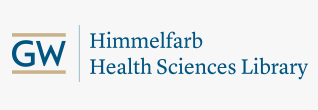
School of Medicine and Health Sciences Poster Presentations
Presentation of Idiopathic Intracranial Hypertension with Sensorineural Hearing Loss
Document Type
Poster
Abstract Category
Clinical Specialties
Keywords
Hearing Loss, Otolaryngology, Intracranial Hypertension
Publication Date
Spring 5-1-2019
Abstract
Objectives: To determine the sensorineural hearing loss (SNHL) pattern in patients with idiopathic intracranial hypertension (IIH). Study Design: Retrospective chart review. Methods: A review of patients with IIH diagnosis and available audiograms. Otologic complaints, hearing threshold and opening pressures were documented before and after intervention. Correlations between opening pressure and hearing thresholds were analyzed using Spearman's rank correlation coefficient due to the non-parametric nature of our data. Results: Forty two patients (mean age = 42.4) were included in the study, 35(83%) of whom were female. The most common otologic symptoms reported were tinnitus in 24 (57%, 14 pulsatile and 10 non-pulsatile), aural fullness in 13 (31%), vertigo in 4 (10%), and facial spasms in 3 (7%) patients. Twenty-nine patients (69%) had some form of hearing loss (threshold over 20dB) of which 17 (40%) were bilateral. The hearing ranged from normal to profound hearing loss, and no specific pattern (low, central, high frequency or flat) was statistically significant in unilateral or bilateral patients. Two patients presented with sudden SNHL and four had normal retinal examination. In three patients hearing thresholds improved with treatment. There was no statistically significant correlation between opening pressures and hearing thresholds, except for air conduction on the left ear (p=0.0059). Conclusions: IIH does not present with any pattern of hearing loss and may present as unilateral, bilateral, mild to profound or even as sudden SNHL.
Open Access
1
Presentation of Idiopathic Intracranial Hypertension with Sensorineural Hearing Loss
Objectives: To determine the sensorineural hearing loss (SNHL) pattern in patients with idiopathic intracranial hypertension (IIH). Study Design: Retrospective chart review. Methods: A review of patients with IIH diagnosis and available audiograms. Otologic complaints, hearing threshold and opening pressures were documented before and after intervention. Correlations between opening pressure and hearing thresholds were analyzed using Spearman's rank correlation coefficient due to the non-parametric nature of our data. Results: Forty two patients (mean age = 42.4) were included in the study, 35(83%) of whom were female. The most common otologic symptoms reported were tinnitus in 24 (57%, 14 pulsatile and 10 non-pulsatile), aural fullness in 13 (31%), vertigo in 4 (10%), and facial spasms in 3 (7%) patients. Twenty-nine patients (69%) had some form of hearing loss (threshold over 20dB) of which 17 (40%) were bilateral. The hearing ranged from normal to profound hearing loss, and no specific pattern (low, central, high frequency or flat) was statistically significant in unilateral or bilateral patients. Two patients presented with sudden SNHL and four had normal retinal examination. In three patients hearing thresholds improved with treatment. There was no statistically significant correlation between opening pressures and hearing thresholds, except for air conduction on the left ear (p=0.0059). Conclusions: IIH does not present with any pattern of hearing loss and may present as unilateral, bilateral, mild to profound or even as sudden SNHL.


Comments
Presented at Research Days 2019.